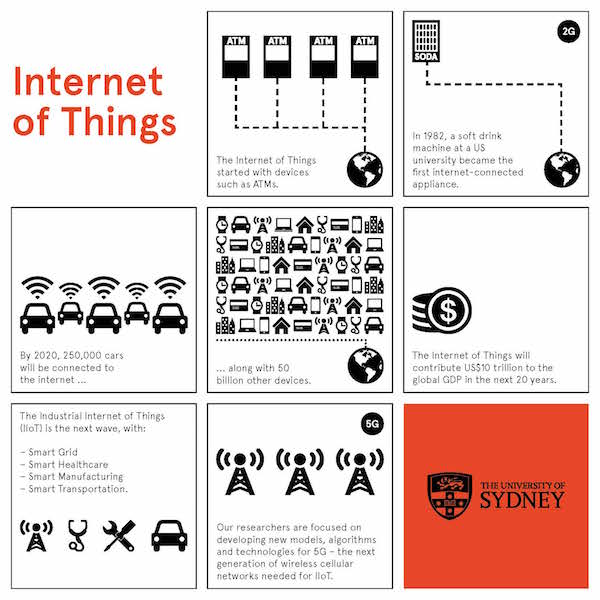
UNIVERSITY OF SYDNEY DESIGNING 5G IIOT NETWORK

Telecommunication specialists at the University of Sydney are designing a 5G cellular network that supports the trillions of interconnected devices predicted to be in use in the coming few years. The 5G network will be dedicated to supporting the ‘Industrial Internet of Things’ (IIoT).
Professor Branka Vucetic, Director of the Centre for Telecommunications Excellence, School of Electrical and Information Engineering, says the dramatic rise in connected devices will see a thousand-fold increase in mobile traffic.
A major challenge for developing the IIoT lies in building new ICT infrastructure with high standards of reliability, latency, security, and interoperability. IIoT applications face challenging requirements that cannot be met by today’s radio-access network, control and computing methodologies.
The timing or latency of the 5G network is critical, so to solve potential efficiency problems Professor Vucetic’s team will look at how to build the wireless network with almost zero latency.
“Latency describes the time it takes for a packet of data to get from one designated point to another within a computer network. And response times can affect efficiency,” explains Professor Vucetic.
“We will be investigating response times that are shorter than 1ms. Improving the current response times will allow us to create the smart environments of our future and emerging technologies.
The IIoT is currently in its infancy but to date Professor Vucetic’s team has been involved exciting pilot projects and research test-beds for trialling new technologies in multiple vertical applications. An example is the Smart Grid Smart City (SGSC) Australian project, which has demonstrated several smart-grid applications on a limited scale for 30,000 NSW households.
The bottleneck in upscaling the deployment of IIoT applications lies in the challenge of using radio-access networks for large-scale connectivity, while meeting the latency and reliability requirements of industrial applications, such as fault detection and isolation in smart grids, self-driving cars, wheelchairs for nursing homes, and tele-robotic surgery.
More Info:
University of Sydney: www.sydney.edu.au/news















RESPONSES